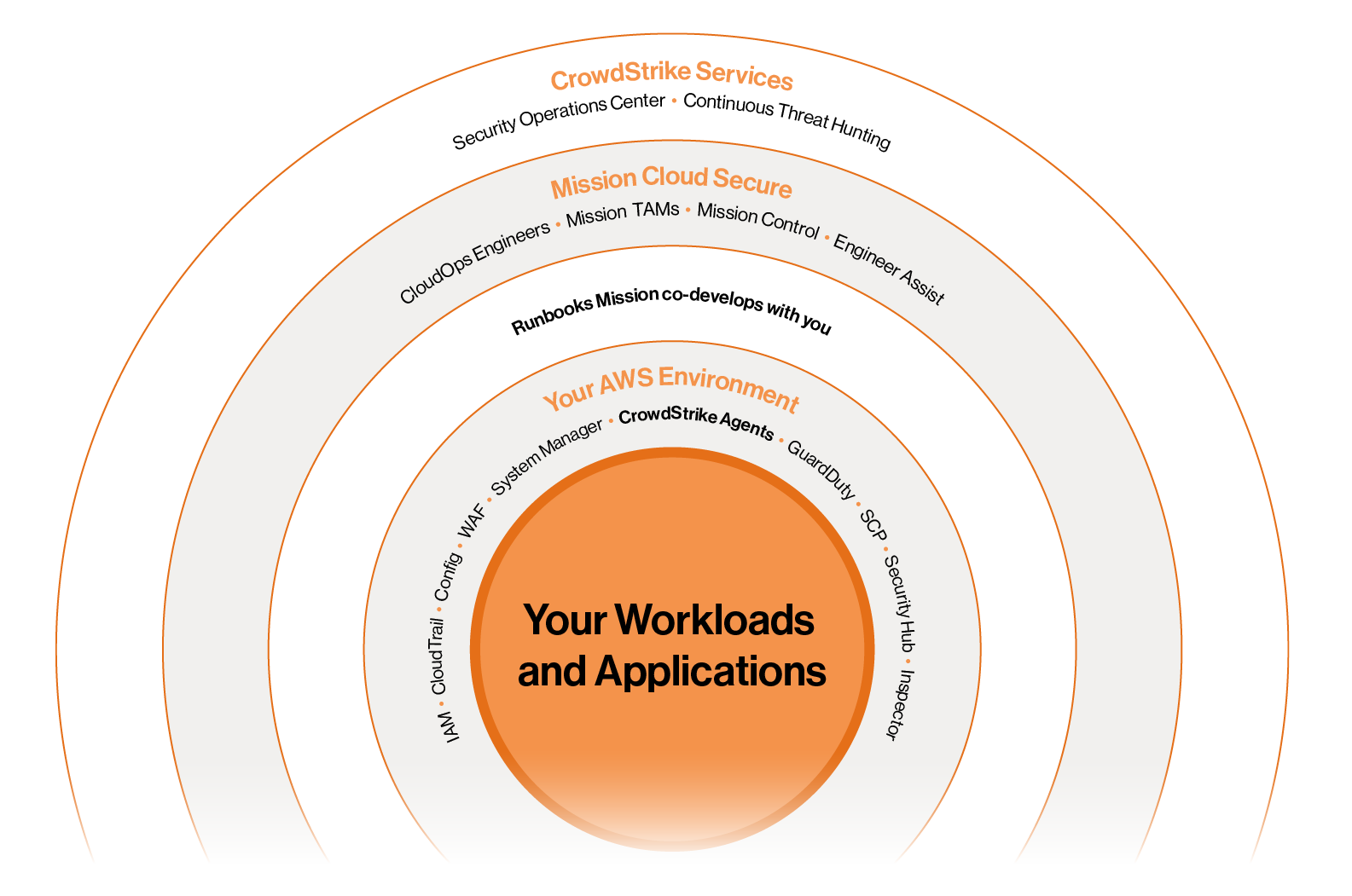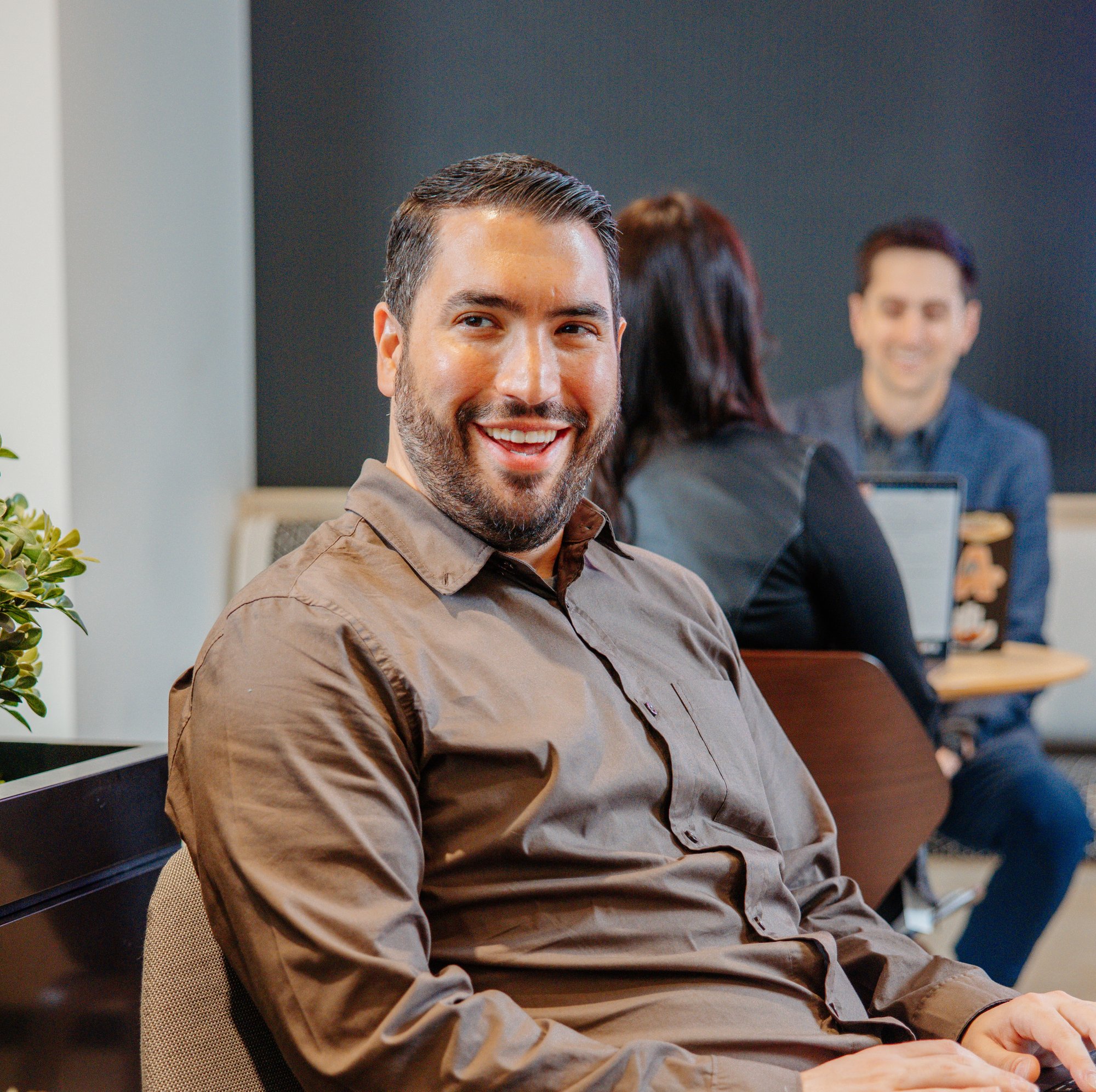AWS Cloud Security
Now with CrowdStrike
Harden security, manage risks, and handle incidents

Our Best Practices, AWS Native Security, & CrowdStrike
We help customers secure their AWS environment through a combination of best practices, AWS native security services, and managing environments with Mission Cloud Secure, which offers 24/7 managed detection and response in partnership with CrowdStrike’s Falcon Complete cloud security platform.
Mission is an AWS Level 1 Managed Security Service Provider (MSSP), and our aim is to help all customers strengthen their security posture. We assert that the right combination of architectural measures and active 24/7 monitoring of your environment provides the necessary oversight and defenses to reduce your attack surface, limit your blast radius, and adapt to changing threats.
Rest Easy with a Secure AWS Environment
-
Understanding Vulnerabilities
Work with our teams to understand where you have vulnerable configurations, or out-of-date software, and build a pipeline for deploying that’s secure and repeatable.
-
Architecture Recommendations
We can suggest architectures and service implementations for remediating issues you’ve detected and help you design a system to appropriately monitor your environment.
-
Harden Your Security
Learn how services like AWS Control Tower, AWS Config, and Amazon OpenSearch can work together with approaches like containers to further harden your security.
-
Modern Environment
Understanding what you need to audit can be just as important as knowing what you need to secure. We’ll teach you how to run a modern environment that documents itself for your compliance.
-
Secure Systems
Network security, data privacy, and organizational controls—we can work on all these dimensions for you to help you secure your systems and ensure they’re operating correctly.
-
Peace of Mind
Security is overwhelming when you don’t know your status. But with tools like Security Hub and CrowdStrike’s Falcon Complete, you gain a holistic picture of your security posture.
Discover Mission Cloud Secure

Mission Cloud Secure is our fully managed service for 24/7 security monitoring and incident response through a powerful combination of CrowdStrike's world-class security platform and Mission's AWS expertise. Protect your cloud resources, endpoints, and credentials while maintaining compliance and operational excellence.
Cloud Secure Features
-
24/7 Managed Detection & Response
Our Security Operations Center manages incidents around the clock
-
CrowdStrike Falcon Complete
The most comprehensive offering from the leader in cloud security
-
AWS Security ExpertiseAward-winning experience in AWS security best practices
-
Unified Security PlatformComprehensive visibility into threats, vulnerabilities, and compliance
“Our customers are large enterprise mortgage lenders closely concerned with securing their clients’ data. The security Mission offers as a 24/7 service ensures our protection, and is very marketable to our customers.”
Frequently Asked Questions
What are the most common ways you can make your AWS environment more secure?
Using native services is the best way to start. Configure IAM permissions to follow the principle of least privilege, institute VPCs and Security Groups to appropriately segment your network, encrypt your data at rest and in transit using the built-in encryption features of services like Amazon S3, Amazon RDS, and EBS along with AWS Key Management Service, log and monitor your environment using services like AWS CloudTrail, Amazon CloudWatch, and AWS Config. Also make sure you are regularly patching and updating your underlying infrastructure and using AWS Backups to manage and secure your data.
What are the benefits of switching to a multi-account architecture?
By having different accounts for different purposes, you can better ensure that a security issue in a given account doesn’t jeopardize the rest of the system. Compartmentalizing which accounts can touch which resources effectively limits the risk of account-related security and breaches. It can also help you to better track costs, simplify networking, and help you meet regulatory or compliance requirements, such as who has access to sensitive customer information.
How can I measure the overall security of my environment?
AWS has its own native tools to do this, like AWS Security Hub. You can also request a security firm to perform an audit, if appropriate. But if you’re looking for a quick way to assess your overall security posture, we recommend Mission Cloud Score, which measures your environment against the well-architected pillars, including security, and will enumerate any risks or vulnerabilities it detects.
I need a SOC. Is that something Mission offers?
Yes. Mission Cloud Secure, our fully managed service for security, detection, and response, we offer a SOC through CrowdStrike as part of the ongoing operations support you receive. You’ll also get Cloud Analysts which can help you assess your environment and measure your alignment to best practices as well as a 24/7 CloudOps support team to help with monitoring and incident management.
A recent audit raised some concerns about our overall security posture. Do I need to re-architect?
It depends. Audits can be a combination of both what your infrastructure is and how it's documented. Sometimes, if it’s a matter of missing documentation, you may be best served by instituting logging and monitoring across your environment to more thoroughly collect information about what’s happening inside of it. But if the audit suggests that your vulnerabilities run deeper than that, it may be time to consider redesigning a part of your infrastructure to better accommodate your security needs.
Is there a point at which I can describe my environment as being “secure” so that I no longer have to worry about it?
Unfortunately not. Security is not a binary and there is not a magic combination of ingredients by which an environment will ever be made totally and permanently secure. Security best practices dictate that we think of security in terms of defensive measures. These measures must be re-visited from time to time, like the rotating of secret keys, to keep them hardened against attackers and to ensure that no system falls into a state of vulnerability. But if continuing to manage these kinds of concerns yourself has become taxing, you should consider adopting a managed service, like Mission Cloud One, where a partner can help manage and respond to security concerns on your behalf.

Take the first step
Security Healthcheck Powered by CrowdStrike
Now is your opportunity to engage with Mission and CrowdStrike to conduct a no-obligation Cloud Security Health Check.


